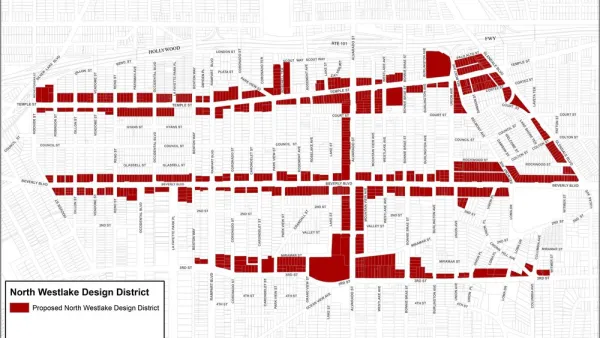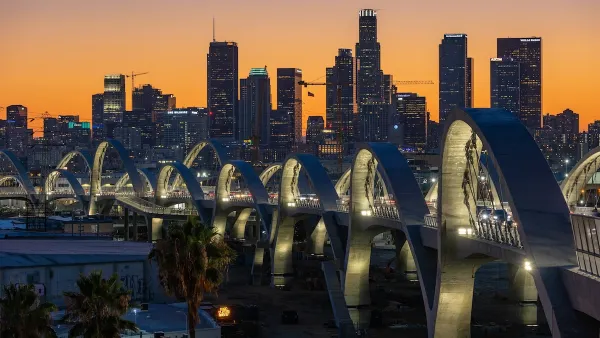In 2006, the Los Angeles Planning Dept. launched an urban design studio to turn Los Angeles into a more pedestrian-friendly city. The studio has gone on to create a set of walkability guidelines, and has more ambitious goals ahead.
Tibby Rothman of The Architect's Newspaper sat down with planners Emily Gabel-Luddy, and Simon Pastucha from the Urban Design Studio. They talked about the Studio's 11 Urban Design Principles, which are a set of values to which developers would be required to subscribe when seeking entitlements.
"AN: The truth underlying the Urban Design Principles is that all the great cities of the world came into being based on the human scale and prior to the advent of automobiles, and it's the design studio's intent to focus back to the human scale. Give me a practical example of what sort of implementation that might entail.
Emily Gabel-Luddy: Let me go to the Street Standards in Downtown Los Angeles. It was our goal that the city move away from an auto-centric proposition to one that emphasizes the pedestrian and mass transit. And so we spearheaded the idea of 15-foot-minimum-wide sidewalks in the dense urban core of our city. The reason this is so significant is because it lets all the developers and property owners have so much more room to put their outdoor café accessories-their tables and chairs-which in turn begins to cultivate the kind of social commerce among neighborhoods, residents, and office workers that was really part of cities prior to the automobile playing such an overriding part in how the public realm is defined and utilized.
AN: How will the Urban Design Principles dovetail into existing neighborhood plans? Don't architects have enough regulations on their plate already?
Simon Pastucha: Both the Urban Design Principles and the Downtown Design Standards are set up as a set of ideas to incorporate into your design. They're not a set of standard requirements saying that you have to have ‘this' at a certain point or a certain place. They just say: How do you meet the intent of these?
EGL: It's not a design review, it's not an ordinance. It says: Here's the value, now tell us how your project has achieved that value. I don't think true design comes from telling architects how to design their buildings. True design comes from having the architect reflect on how that building achieves value that is expressed in a way that is appropriate to a local community."
FULL STORY: Q&A: LA Urban Design Studio

Analysis: Cybertruck Fatality Rate Far Exceeds That of Ford Pinto
The Tesla Cybertruck was recalled seven times last year.

National Parks Layoffs Will Cause Communities to Lose Billions
Thousands of essential park workers were laid off this week, just before the busy spring break season.

Retro-silient?: America’s First “Eco-burb,” The Woodlands Turns 50
A master-planned community north of Houston offers lessons on green infrastructure and resilient design, but falls short of its founder’s lofty affordability and walkability goals.

Test News Post 1
This is a summary

Analysis: Cybertruck Fatality Rate Far Exceeds That of Ford Pinto
The Tesla Cybertruck was recalled seven times last year.

Test News Headline 46
Test for the image on the front page.
Urban Design for Planners 1: Software Tools
This six-course series explores essential urban design concepts using open source software and equips planners with the tools they need to participate fully in the urban design process.
Planning for Universal Design
Learn the tools for implementing Universal Design in planning regulations.
EMC Planning Group, Inc.
Planetizen
Planetizen
Mpact (formerly Rail~Volution)
Great Falls Development Authority, Inc.
HUDs Office of Policy Development and Research
NYU Wagner Graduate School of Public Service




























